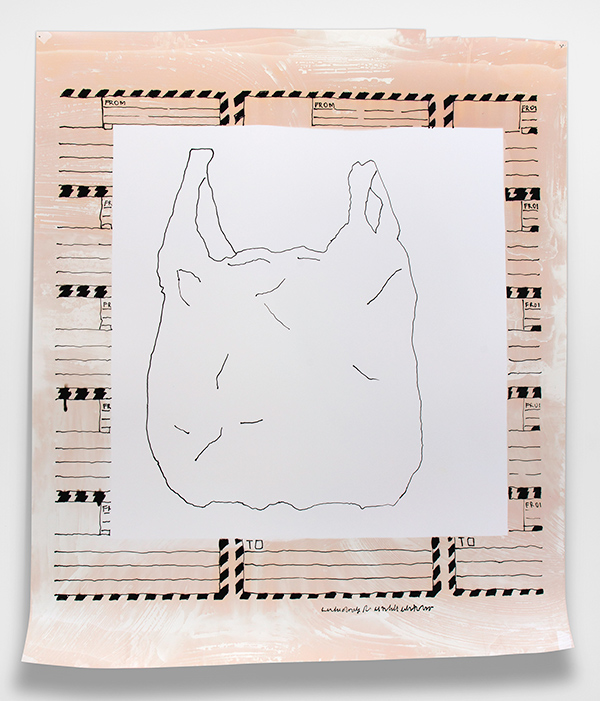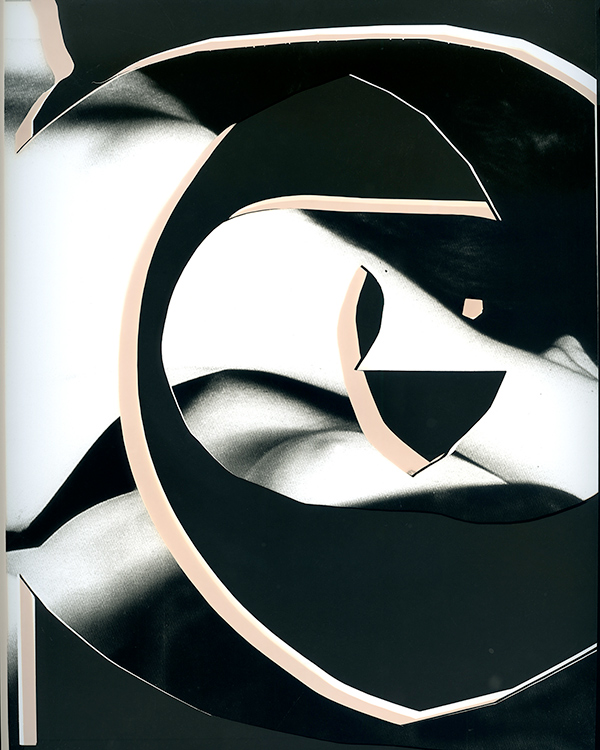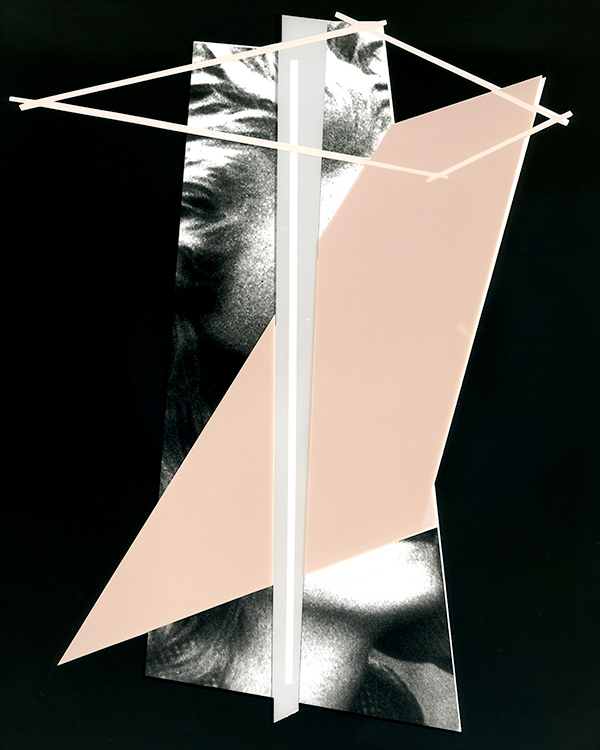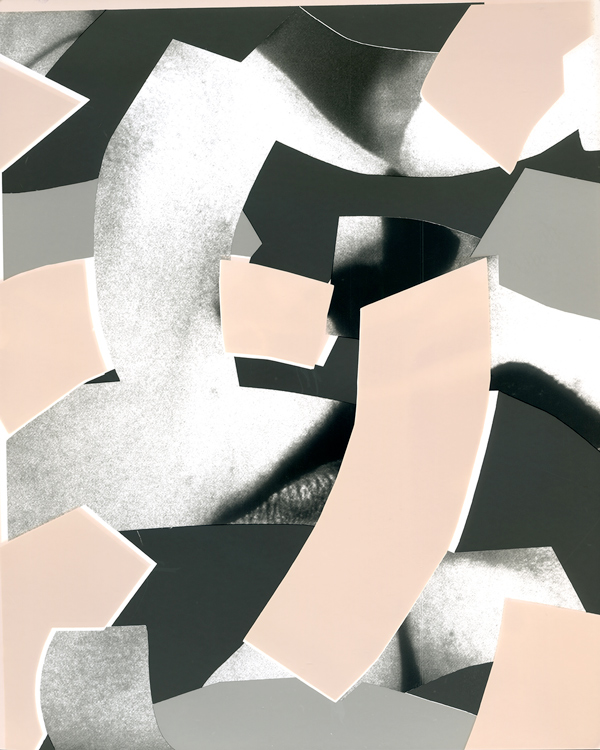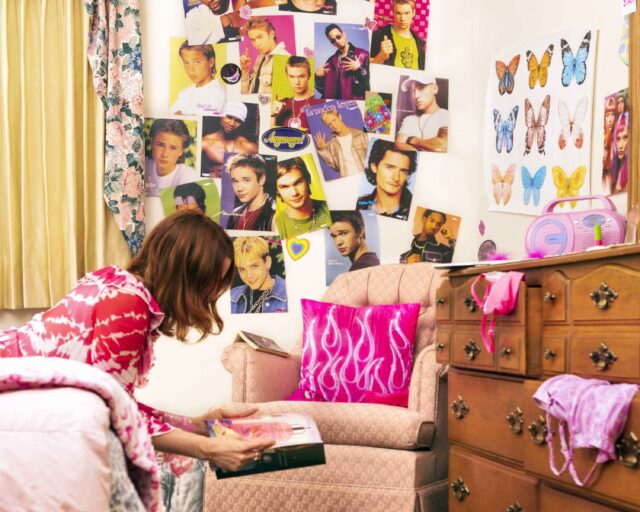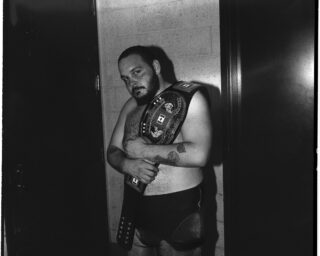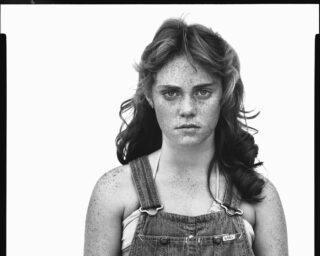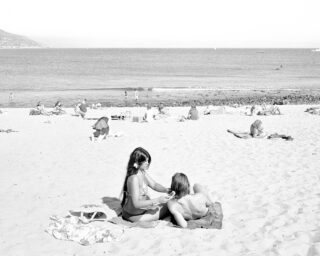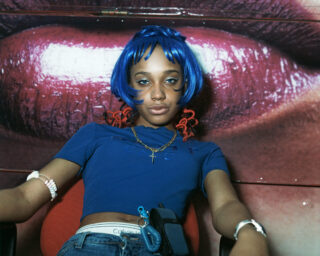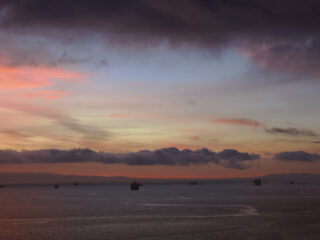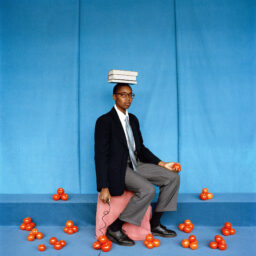Between Pictures and Concrete Objects
Anthea Behm discusses feminism, photograms, and what it means to “hover” in the world.
Anthea Behm is a difficult artist. I mean that in the best sense: her work is beautiful, agitated, and restless. In the five years that we have been friends, I have never known Anthea to make work that resembles anyone else’s. Her new series in particular—which we will be discussing here—refuse singular description. They exist, perhaps most succinctly, in the nexus of feminism, twentieth-century art history, concretism, and the phenomenological experience of a life lived.
Carmen Winant: I am so moved by this new body of work, Anthea, which I know is ongoing and not yet complete. I’d like to start by asking you about how you carve out an in-between kind of definition for your practice, and then talk a bit about your unique process—which I think we could say that you have invented, to some degree—and finally discuss the work in relation to feminism.
I thought it would be useful to start with two words: “concrete” and “hovering.” I’ve heard you use both of these terms in describing your work, and yet they strike me as contradictory. Can you speak to this, and the notion of making things that, in your words, “hover between pictures and concrete objects”?
Anthea Behm: When people talk about the “concrete arts,” be that sculpture or photography or poetry, they have this idea of something that is all in itself and is not bound up in other things. There’s an idea that this makes something more “what it is”: a photograph that’s itself an object rather than about another object. But that’s actually a bizarre idea of what things are: that something could just be in itself and not be relational. What doesn’t hover in relation? What isn’t always connected to other things and people? The single plane of the world, with all its striations and variegations and hidden ducts and lost folds, that’s what the concrete is.
Hovering is onomatopoeic for me, not in terms of sound, but in terms of effect—as a word that registers the affect of process, becoming, the constant movement of the layers and relations of the world. When I use the word “hover,” it’s to get at this idea of simultaneity, of our liminal connections to multiple spaces, times, and things. Hovering is ontological in this sense—it’s what I think of objects doing, and what we are, as humans in the world.
Winant: So in this sense, photograms are perhaps more in contact with the world? Less a picture of a thing, and more an impression of the thing itself.
Behm: I do consider photograms to be in contact with the world, but not more in contact than a picture, because it’s this binary split between a picture of a thing and an impression of the thing itself that I don’t recognize. Photograms are “in contact” not because they are solely themselves and representational photography is relational, but because being in contact with the world is always some mix of enclosure and connection. To be in contact with something is to form a picture of what has impressed itself on you. The picture is a kind of, I don’t know, a kind of attempt to come to terms with the fact of your embedded-ness in life, with the fact that impressions are always being made on you and you are always making impressions on things.
The philosopher Branka Arsić writes about a nineteenth-century idea of the “camera obscura of the earth,” in which all things come to bebecausetheir exposure to the sun is refracted by the shadows of other things and beings, which they process, or “develop,” in the nighttime. I love this idea of the world itself as a kind of photograph—and thus to be in contact with the world, one must have what the world already has, which is both things and impressions.
Winant: The photographs themselves are cut on slight biases, and hung without frames, pinned only on top corners so that they curl upwards at the bottom. As a result, they literally hover. Can you speak to these formal decisions, and how they answer back to such ideas?
Behm: There is an immediate relationship between the viewer and the paper, which I like—not to fetishize the paper in itself, but as another object in (and of) the world. The photographs are made on resin-coated paper, which is basically plastic-coated paper, and like the plastic bag or tablecloth represented in the Mirror Lamp Hammer (2017–ongoing) series, the photographs can move easily in—and through—the world. They are not hard, stable objects, but flexible and nimble, which I hope is also reflected in the potential readings of the work.
The way the work is presented also reflects how I make it in the studio. For one thing, I am constantly moving for work or other opportunities, making movement and circulation not only at stake in the work, but also my embodied experience. And because the work is so large-scale, I’ve had to create temporary darkroom spaces. So, unlike a conventional darkroom, I only have a couple of red safelights. This makes it difficult to see what I’m doing and the way the paper is cut is a result of this. I am trying to control these actions and processes in the darkroom, but chance enters in, and it’s this messiness between—or hovering, to invoke it again—that I am interested in. Of course, I could have also recut the paper after it was fixed, but I am interested in showing these tensions and economies of production.
Winant: And what of their verticality?
Behm: They are made vertically for the most part, and I think a lot about painting and drawing when making this work. I enjoy making these like paintings—not framed yet, hung with a support that allows the surface to be worked on. And then I can move them straight from the studio to exhibition, just as you might with a painting. I also go between working with and against the paper. “Against,” in terms of pushing it to do things it is not meant to do, and “with” in terms of letting it do what it wants. It is the latter reason that I don’t pin the work in the bottom corners. Being roll paper, it has a “natural” curl, and this is something I don’t force flat . . . at least I haven’t had a reason to yet.
Winant: How do online, Photoshop, and darkroom processes come to meet in these pictures?
Behm: It varies from work to work. For example, with the Mirror Lamp Hammer series, I find most of the images I work with online. I search, drag, copy, and organize archives of images. I then import these images into Photoshop and make sketches for works that I then create through analog processes in the darkroom. This primarily involves painting and drawing with chemistry and light. It is important to me that these processes are highly controlled, but at times, like with the cutting of the paper or painting with chemistry, my control is exceeded by the conditions of the darkroom or material.
Winant: In those instances, it seems, you begin to “show your hand,” so to speak, and that’s not always done in photography, where the idea of a “good” photograph is sometimes that the artist’s hand disappears to allow the image to come through.
Behm: Exactly, and it was against this conception that Moholy-Nagy and Man Ray and others foregrounded their place in the making of images by featuring hands in their early experimentations with paper and light. I think it’s interesting how this gesture of “showing the hand” (either the hand itself or in glimpses of the apparatus) has come to be equated with a kind of self-reflexivity. It’s as if just revealing yourself and/or how you made the thing automatically means some form of transparency.
Winant: Though “showing the hand” doesn’t always mean a heightened level of authenticity, accountability.
Behm: Right. Showing the hand doesn’t necessarily reveal anything about the social conditions that drive the relationships between us and the things our hands do or take part in. In fact, it might work as another element of concealment. Like, look at my left hand that’s showing you how the work is made, but don’t look at my right hand, which is abusing the power I have as a subject, or further still, as an institution. I’m interested in working through this complexity somehow by simultaneously revealing and concealing the hand. Whether through an image or process, the hand is at once in a position of becoming revealed and concealed.
Winant: Your two new series are DUST (named after the space where they were made as part of the Plates of the Present residency in Paris) and a still-untitled work in progress featuring nude images of Charis Wilson taken by Edward Weston. The first also uses nudes, from Man Ray, combined with forms from Moholy-Nagy. Each of these so-called “masters” of the form has justified their use of female bodies as “formal investigations”; your work troubles that explanation. How did you come to work with this material, and feel the need to problematize it?
Behm: The first work in photography I ever did was about the female body. It was about how I can inhabit a body that, as much as it was mine, often felt taken away from me. It wasn’t only taken away in the obvious ways—by gazes that objectified me or men who thought they had as much right to my body as I did—but also in surprising ways: by women and their assumptions about other women, and what it meant to be a feminist or fail to be a feminist.
Winant: Perhaps we can return to the idea of hovering here: how we move between different, slippery notions of self, and self-affirmation.
Behm: I love how you put that, and there is something potentially liberating in that slipperiness. But this is where “hovering” can become pejorative, when bodies (along the spectrum, in very different ways) can be stuck between desires and codes and prescriptions. It feels at times, quite viscerally, like there is no good way to be in a body. So often our bodies can seem overdetermined and unavailable, even when we think we are “reclaiming” ourselves and founding new intimacies. I don’t yet know how to answer your earlier question about the origins of this new work, how to say what exactly brings me to a material or subject, because it’s so many different strands and motivations.
Winant: Do you think of your project as intending to “rescue” these women? From perennial muse-hood?
Behm: It would be good if we thought of them beyond just being muses, but I don’t want this work to be some kind of “rescuing” gesture, as if they needed rescuing, as if I were in a position to rescue them, as if history had moved to such an extent that we could now look back with clean hands. Because we don’t have the time or space to get into the different types of feminism here, I would just say that I don’t want to condemn how different women respond to patriarchy, because I think we should stay focused on patriarchy itself, on how we’re all finding different ways of living in a world that is, at some real level, shaped by heterosexual male ways of seeing, and how we can continue the ongoing liberation movements to surpass that condition.
Winant: Women can oppress one another, too.
Behm: Of course. And of course there are people in the world who refuse this either/or of man/woman. My intention here is not to use “women” as a homogenous category, or overlook the intersectionality that is required when discussing issues of gender. Indeed, those complications are central to my thinking. For example, one of the things that interests me about Charis Wilson in Weston’s photos is how blissfully unaware she seems of the fact that she’s rolling around on colonized land. As if her reclaiming of her body and her right to present herself depended on the layers of dispossession that the photo wants to keep buried in the sand. Some of what I’m curious about is the capacity of images to excavate these layers and intersections. And to complicate it further, there is something still formally significant about the work of these “masters.” I’m not trying to dismiss them entirely.
Winant: Right, your claim is not totalizing.
Behm: That would go against the subtleties, fragments, and layers that I want to expose on the single plane of the photograph. I’m not trying to make a final statement about the misogyny of history. I’m trying to break apart the past and rearrange it in some manner. I’m drawing my way toward this.










